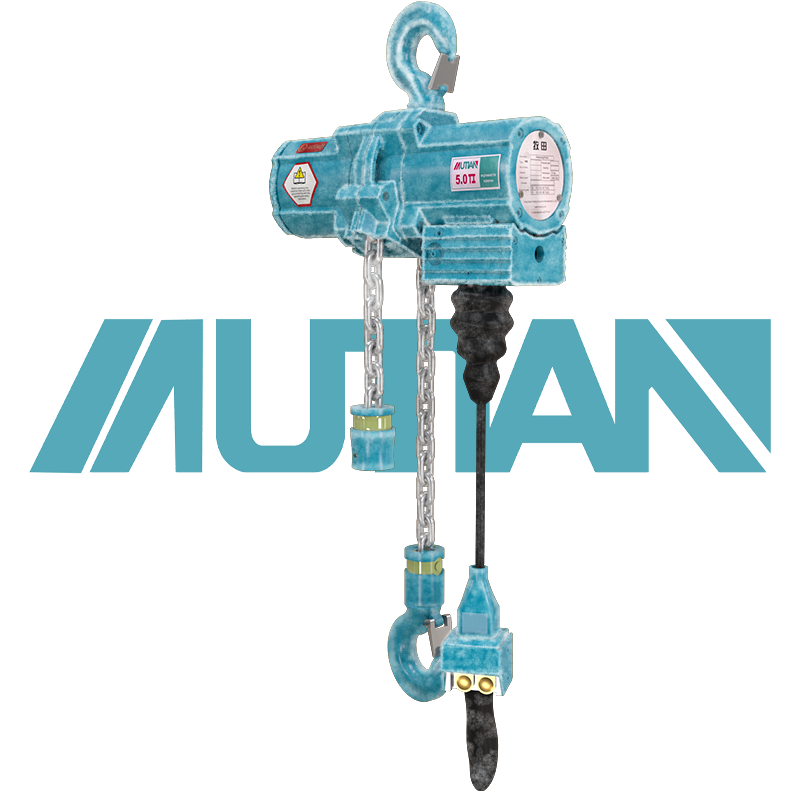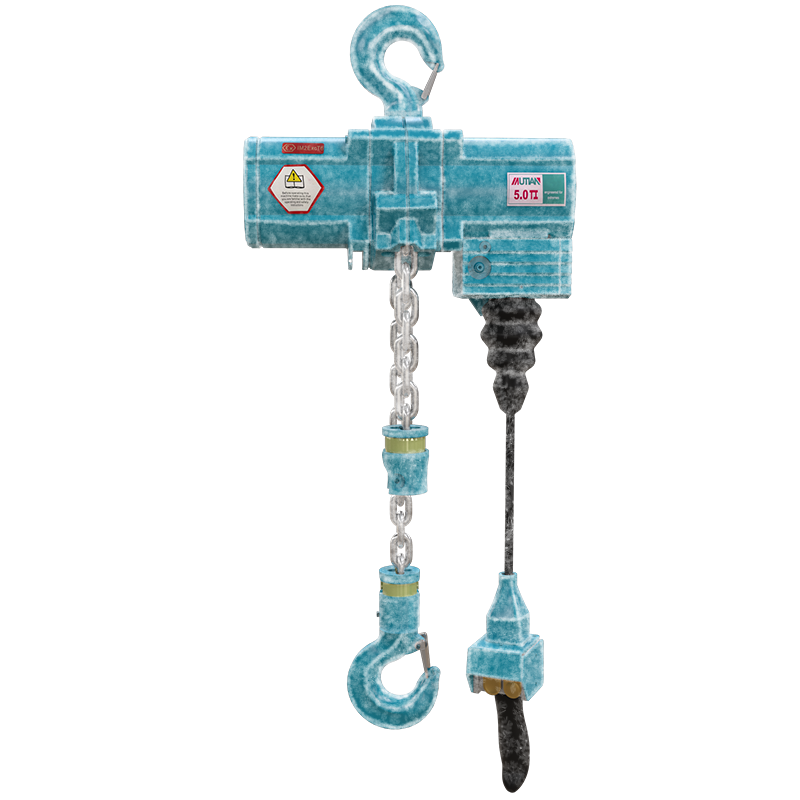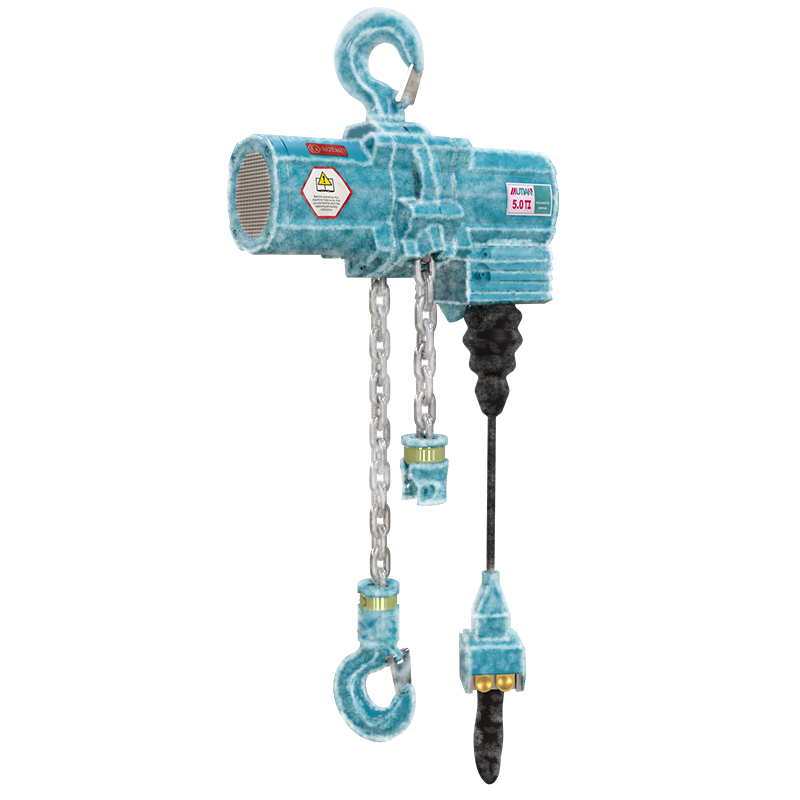 中文版
中文版



Welcome to contact us by phone:0086-0312-7969888
When using a low-temperature pneumatic chain hoist in cold environments, it's essential to pay attention to specific factors to ensure safe and reliable operation. Here are some key considerations:
Operating Temperature Range:
Check the manufacturer's specifications to understand the recommended operating temperature range for the pneumatic chain hoist. Ensure that the hoist is used within the specified temperature limits to prevent performance issues.
Cold-Resistant Lubrication:
Use cold-resistant lubricants as recommended by the manufacturer. Lubrication is critical for the smooth operation of moving parts, and cold-resistant lubricants are designed to perform well in low temperatures.
Inspect Seals and Gaskets:
Regularly inspect seals and gaskets for signs of wear, damage, or stiffness. Flexible seals are crucial for preventing the ingress of cold air and moisture, which can impact the hoist's internal components.
Prevent Ice Accumulation:
Take measures to prevent ice accumulation on critical components. Ice formation can impede the movement of the chain and other parts, leading to operational issues. Consider using features like freeze-resistant air lines.
Temperature Monitoring:
If available, use temperature monitoring devices to keep track of the operating temperature. Some hoists may be equipped with sensors and controls that adjust performance based on temperature conditions.
Proper Ventilation:
Ensure proper ventilation in the operating environment to prevent the buildup of moisture. Moisture can lead to corrosion and freezing, affecting the hoist's components.
Correct Air Supply:
Provide a clean and dry air supply to the pneumatic hoist. Moisture in the air can freeze, causing operational problems. Consider using air dryers or filters to remove moisture from the compressed air.
Avoid Overloading:
Adhere to the hoist's rated capacity and avoid overloading. Overloading can lead to accelerated wear and reduce the hoist's lifespan.
Routine Inspections:
Conduct routine inspections of the hoist to identify any signs of wear, damage, or malfunction. Promptly address any issues to prevent further damage and ensure the hoist's reliability.
Manufacturer Guidelines:
Follow the manufacturer's guidelines, recommendations, and maintenance procedures outlined in the user manual. Manufacturers provide specific instructions for optimal performance and safety.
Training and Operator Awareness:
Ensure that operators are trained on the proper use and maintenance of the low-temperature pneumatic chain hoist. Operators should be aware of the specific considerations for operating the hoist in cold conditions.
By paying attention to these considerations and following manufacturer guidelines, users can enhance the performance, safety, and longevity of low-temperature pneumatic chain hoists in cold environments. Regular maintenance and inspections are crucial for identifying and addressing any issues before they affect the hoist's operation.


X